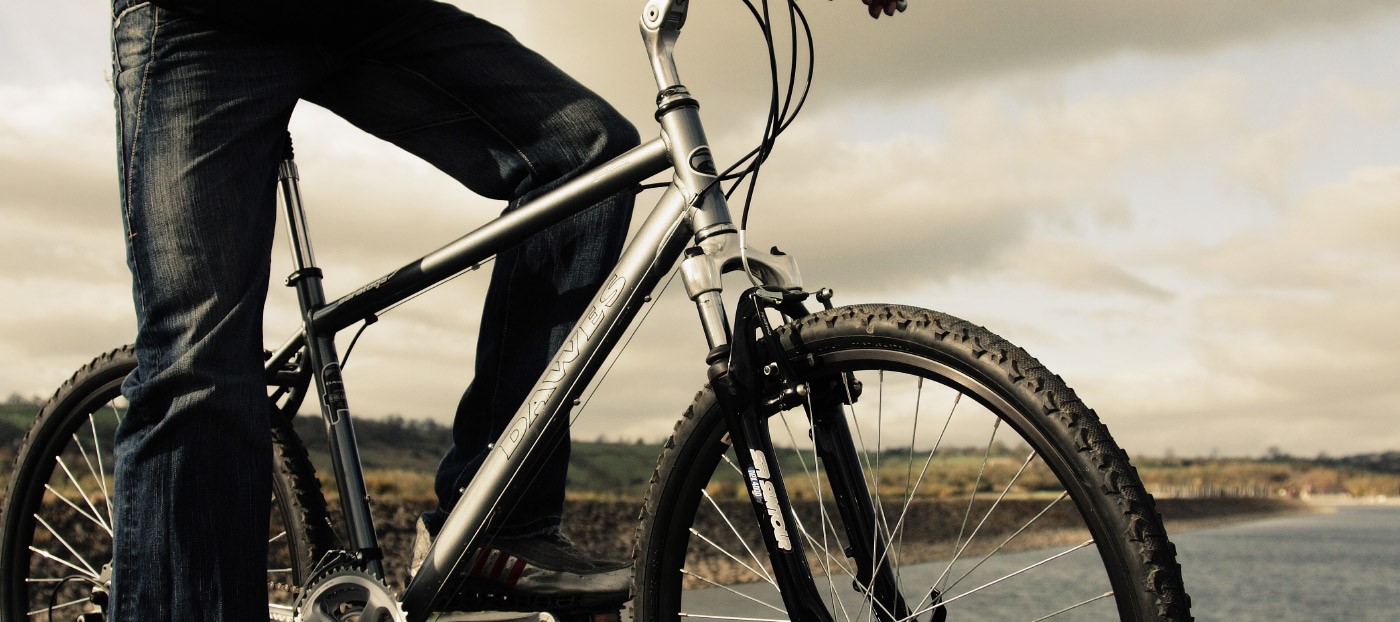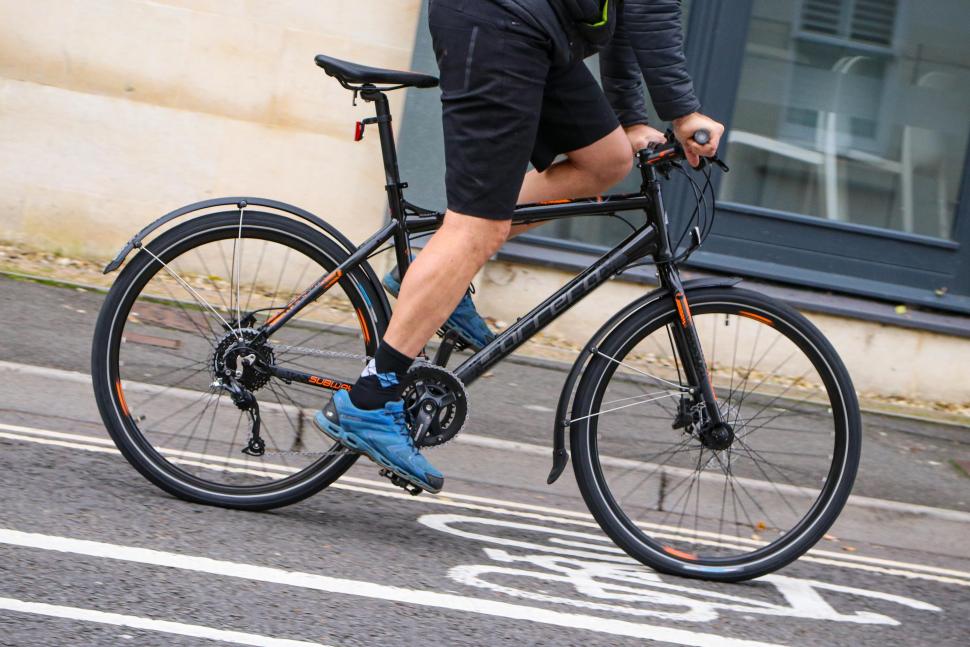To change brake pads on a hybrid bike, follow these steps: gather the necessary tools, remove the old brake pads, install the new brake pads, and adjust the brakes for optimal performance.
Changing brake pads on a hybrid bike is essential for maintaining safe and efficient braking. Brake pads wear out over time and need to be replaced to ensure proper stopping power.
Allen wrench set
Adjustable wrench or combination wrench
New brake pads
Rubbing alcohol or degreaser
Clean cloth or paper towels
Changing brake pads on your hybrid bike is a straightforward process that plays a crucial role in maintaining your bike’s safety and performance.
By following the step-by-step guide and considering the maintenance tips, you can confidently replace your brake pads and ensure reliable braking power on your rides.
5 Tools To Change Brake Pads On Hybrid Bike:
| Tools | Description |
| Allen wrench set | Different sizes of Allen wrenches for various bolts and screws. |
| Adjustable wrench | Used for tightening or loosening nuts and bolts. |
| New brake pads | Compatible brake pads for your specific bike model. |
| Rubbing alcohol | Used to clean the braking surface and caliper arms. |
| Clean cloth or towels | For wiping down and drying the brake components. |

How to change gears on a bike | Gear shifting explained
Changing gears on a bike can be intimidating for beginners, but with a little practice, it becomes second nature. Gears come in handy when cycling uphill, maintaining a comfortable pedaling speed, or cycling on a flat surface.
To change gears, use your shifters, which can either be integrated into the brake system for road bikes or separate thumb triggers for hybrid and mountain bikes. The left shifter controls the front derailleur, changing the chain between front chain rings, while the right shifter controls the rear derailleur, swapping the chain between cogs on the rear cassette.
The larger shifter lever moves the chain into larger rings, making pedaling easier, while the smaller shifter lever shifts the chain into smaller rings, making pedaling harder. It’s important to avoid “cross chaining” to reduce the risk of damaging the bike’s drivetrain and maintain efficiency. Remember, with practice comes ease, and soon you’ll be confidently shifting gears while cycling.
Shifting 101 – A How To Guide on Shifting Bike Gears
Shifting gears on a bike can be intimidating, especially for beginners. To simplify the process of gear shifting and minimize stress on your drivetrain, it is essential to use one shifter at a time.
Using the left-hand shifter moves the chain on the front chainrings, while using the right-hand shifter moves the chain on the back cassette. Knowing when to change gears is crucial to ride efficiently.
Before you start climbing a hill, shift to an easier gear. While descending, move the chain to a harder gear to control your speed. Shift one gear at a time, and avoid shifting both the front and rear shifters simultaneously, as this puts pressure on your bike’s drivetrain and can cause it to wear out quickly. Keeping your bike’s drivetrain clean and lubricated enhances its efficiency and longevity.
By following these tips and practicing regularly, gear shifting will become second nature, making your cycling experience smoother and more enjoyable.

When should I change gears?
When it comes to changing gears on your bike, timing is everything. Knowing when to shift can greatly improve your biking experience and make it easier to navigate various terrains.
So, when should you change gears? The answer is simple – it all depends on the terrain you’re facing. If you’re facing a steep climb, it’s best to shift to a lower gear to make pedaling easier.
On the other hand, if you’re riding on smooth and flat terrain, you can shift to a higher gear to increase your speed. It’s important to pay attention to your pedaling cadence and not strain your legs by pedaling too hard in a higher gear.
As you become more experienced, you’ll learn to anticipate when to shift gears based on the terrain you’re about to encounter. Remember, changing gears should be a smooth and seamless process that helps you maximize your pedaling efficiency.
How to Shift?
Shifting gears on your bike can seem complicated, but it’s actually pretty straightforward. In general, you’ll want to shift to a lower gear when you’re going uphill or starting from a stop.
This will make it easier to pedal and keep your cadence steady. Conversely, you’ll want to shift to a higher gear when you’re going downhill or riding on flat ground.
This will make it harder to pedal, but it will also help you go faster. To shift gears, simply use the shifter on your handlebars or shift levers on your downtube. You’ll want to do it smoothly and gradually to avoid putting too much strain on your bike’s drivetrain.
Once you shift, give the pedals a few turns to make sure the gear engages properly. With some practice, you’ll soon be able to shift gears without even thinking about it!

How to change gears on a road bike?
Changing gears on a road bike is all about timing, coordination, and practice. First, it’s important to understand when you should be shifting gears. The general rule is to shift before you need to, rather than waiting until you’re struggling to pedal. To shift, use your shifters located on your handlebars.
The right shifter controls the rear derailleur and shifts through the bike’s cogs, while the left shifter controls the front derailleur and shifts between the chainrings.
As you shift, keep pedaling and try to maintain a consistent level of effort. It’s also essential to listen and feel for the gears to complete their shift. Improper gear shifting can cause gear grinding, wear on your bike chain and gears, and put stress on your knees.
Proper gear shifting takes time to master, but with a little patience, practice, and attention to your bike’s mechanics, you’ll be changing gears like a pro in no time.
Maintenance
Maintaining your hybrid bike is crucial to ensuring that it stays in top condition for your rides. One aspect of maintenance that you need to pay attention to is the brake pads.
Over time, brake pads can deteriorate and wear out, leading to poor braking performance. Fortunately, replacing brake pads is a relatively simple and quick process that you can do at home.
All you need are a few tools and some expert guidance. Clean and lubricate the levers if you notice poor braking performance. Use a pad pusher tool or a fat/wide flathead screwdriver, needle-nose pliers, or a flat head screwdriver to replace the disc brake pads.
Check for wear and replace brake pads when they are worn down to 25% of their thickness or when they are just over 1.5mm. With regular maintenance, you can ensure that your hybrid bike stops safely and effectively, giving you peace of mind on your rides.

How and When to Use Your Gears?
Gears are an essential component of any bike and can make riding easier, more efficient, and more enjoyable. Knowing how and when to use your gears is crucial for getting the most out of your ride.
In general, it’s best to use higher gears when you’re going downhill or on a flat surface, and lower gears when you’re going uphill or need more power. It’s important to shift gears before you need them, so anticipate changes in terrain and use your gears accordingly.
When shifting gears, ease off on the pedals slightly, shift to the desired gear, and then resume pedaling. Don’t shift gears while under heavy load, as this can strain the chain and derailleur. Finally, be sure to maintain your gears by cleaning and lubricating them regularly and replacing worn components as needed.
With a little practice and attention, you’ll be able to master gear shifting and enjoy a smoother, more efficient ride.
Bicycle Gears
Bicycle gears are an essential component of any bike, whether it’s a hybrid, road or mountain bike. Gears enable riders to adjust the resistance and speed of their ride, making pedaling up steep hills easier and allowing them to achieve greater speeds on flat terrain.
The number of gears on a bike can vary, from a single-speed bike with just one gear, to a road bike with up to 20 gears. Each gear offers a different resistance level, with lower gears making pedaling easier and higher gears making riding faster.
It’s important to use gears correctly, as improper use can cause damage to the bike and make cycling difficult. Using the correct gear can also help prevent muscle fatigue and injury, making for a more enjoyable ride.
Regular maintenance of gears is also important, such as checking for wear and tear, adjusting tension, and cleaning regularly, to ensure they perform at their best.

Cross Chaining
Cross-Chaining is a term that refers to the extreme angle of the chain when the rider is using the largest chainring in combination with the largest cog or the smallest chainring with the smallest cog.
This scenario can lead to a significant decrease in drivetrain efficiency, which can cause extra resistance and chain wear.
While it may seem like a good idea to use this combination for maximum speed, experts suggest avoiding cross-chaining altogether. Optimal chain alignment can be achieved by keeping the chain as straight as possible in the largest cog and chainring combination.
If a rider needs to shift to a smaller cog, they should shift to the smaller chainring to keep the chain aligned. Using the small chainring may result in a slightly lower gear ratio, but it will improve drivetrain efficiency, reduce wear on the chain, and make for a much smoother ride.
How to shift: the basics
Shifting gears on a bicycle can seem intimidating, but it’s really quite simple once you get the hang of it. The most basic thing to understand is that gears are used to make pedaling easier or harder.
When you shift to a higher gear, it becomes harder to pedal, but you go faster. When you shift to a lower gear, it’s easier to pedal, but you go slower. To shift gears, you simply move the gear shifter on your handlebars.
On most bikes, the right shifter controls the rear gears, while the left shifter controls the front gears. The rear gears are numbered from the smallest (easiest to pedal) to the largest (hardest to pedal), while the front gears are numbered in the opposite direction.
To shift, simply push or pull the shifter until you reach the gear you want. It’s important to shift before you need to, so you have time to adjust and find the right gear. With a little practice, shifting gears on your hybrid bike will become second nature.

Using the Trim Feature
The trim feature on some road bikes is a great way to improve gear efficiency and eliminate cross chaining. It allows for small micro-adjustments of the derailleur to prevent the chain from rubbing or stretching at an angle that could cause damage over time.
For example, if you’re in the largest chain ring and approaching the larger cogs on the cassette, you can micro-shift the front derailleur to create more space and avoid any rubbing.
This is especially helpful in situations where you need to make slight changes in terrain and slope. Consistently using your gears to maintain a steady cadence and power output is important when cycling, as it not only improves your performance but also helps to prevent you from exhausting yourself too quickly.
By utilizing the trim feature, you can improve your gear efficiency and keep your bike running smoothly over time.
How to use Shimano road bike shifters?
Shimano road bike shifters are a popular choice among cyclists due to their reliability and ease of use. To use them, start by familiarizing yourself with the different mechanisms of the shifters.
The right shifter controls the rear derailleur, which shifts the chain between the cogs on the rear cassette. The left shifter controls the front derailleur, which swaps the chain between the front chainrings.
Remember that the larger lever on the shifters moves the chain into larger rings, making pedaling easier, while the smaller lever shifts the chain into smaller rings, making pedaling harder.
Always shift one gear at a time and avoid cross chaining, which occurs when your drivetrain is in undesirable and inefficient positions. If your Shimano road bike shifters have a trim feature, use it to micro-shift the derailleurs to eliminate cross chaining and improve gear efficiency.
By mastering the use of your Shimano road bike shifters, you can enjoy a smoother and more efficient ride.
Thumb shifters
Thumb shifters may seem like a thing of the past, but they can still be found on many hybrid and mountain bikes. These handy little gadgets allow you to shift gears with just a flick of your thumb without having to take your hands off the handlebars.
They work by pushing or pulling a lever, which moves the cable and shifts the derailleur to the desired gear.
This makes shifting gears quick and easy, which is especially important when you’re riding on rough terrain or need to shift gears quickly to avoid an obstacle. Although they may not be as popular as other types of shifters, thumb shifters are a reliable and durable option for those who prefer a more traditional approach to gear shifting.
So, if you’re in the market for a new bike or looking to upgrade your current one, don’t overlook the humble thumb shifter. It just might be the perfect option for you.
How to use bar-end shifters and down-tube shifters?
Bar-end shifters and down-tube shifters are commonly found on vintage road bikes, and while they may seem outdated, they can still be quite effective.
To use bar-end shifters, you simply push or pull the lever located at the end of your handlebars to change gears. Down-tube shifters are located on the downtube of your frame and require you to reach down to change gears.
Both types of shifters may take some getting used to, but they offer a more tactile and precise feel than modern shifters. When using bar-end or down-tube shifters, it’s important to anticipate when you need to shift and shift before you need to, as the process can be slower than modern shifters.
Additionally, it’s a good idea to start off in an easier gear and work your way up to a harder gear as you gain speed. With practice, using bar-end or down-tube shifters can become a seamless and enjoyable experience.
Conclusion
In conclusion, changing the brake pads on hybrid bikes can seem like a daunting task, but with the right tools and knowledge, it can be done easily.
It is important to choose the right type of brake pads for your bike based on your personal preferences, as there are multiple types available, each with its own advantages and disadvantages.
Additionally, proper maintenance and bedding-in of the new brake pads are essential to ensure maximum braking power and longevity. In general, when it comes to gears, shifting smoothly and at the right time can make all the difference in a bike ride.
Understanding when and how to shift gears, as well as how to use different types of bike shifters, can help you customize your ride and improve your overall experience.
With these tips and tricks, you should be able to confidently change brake pads and shift gears on your hybrid bike, ensuring a safe and comfortable ride every time.